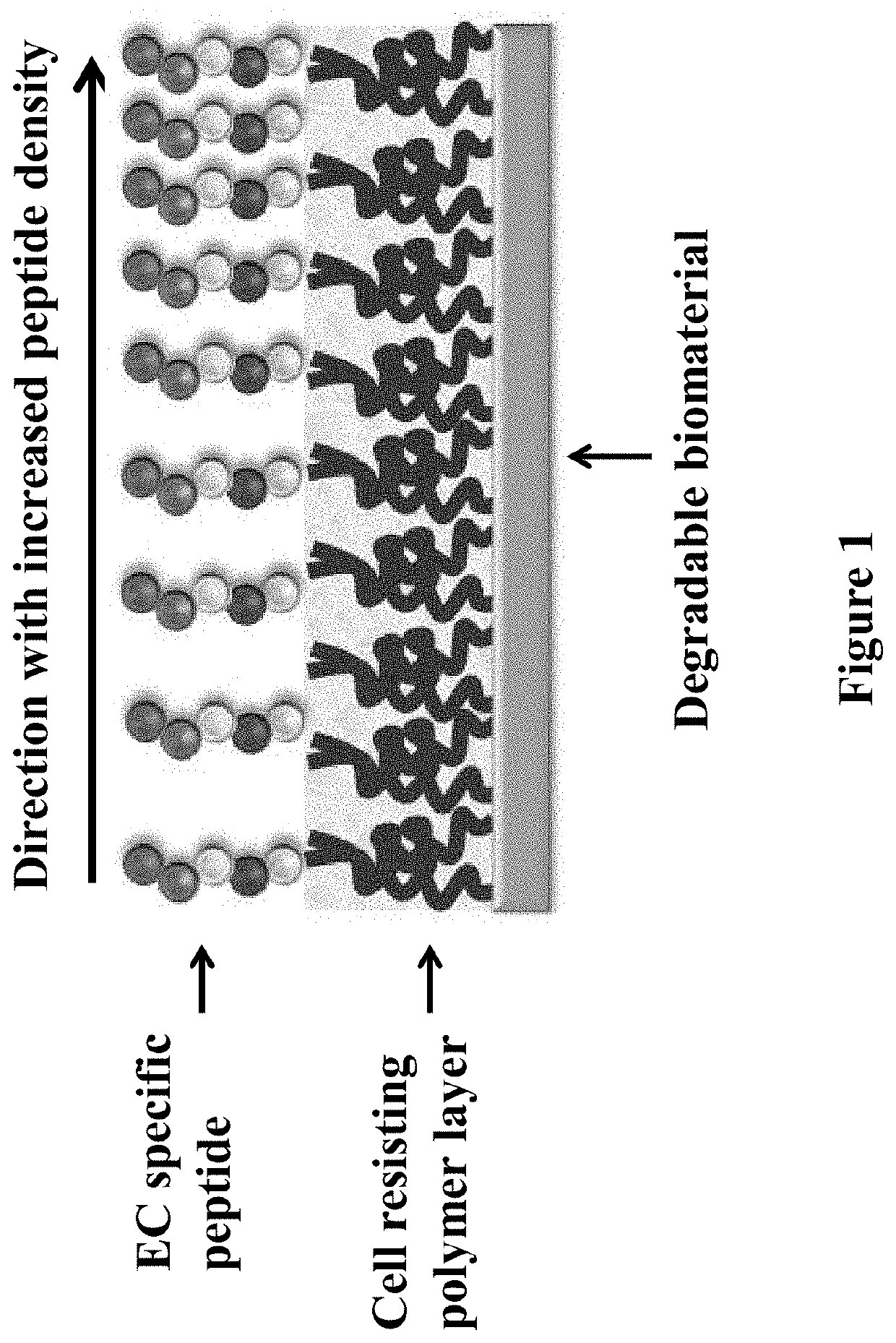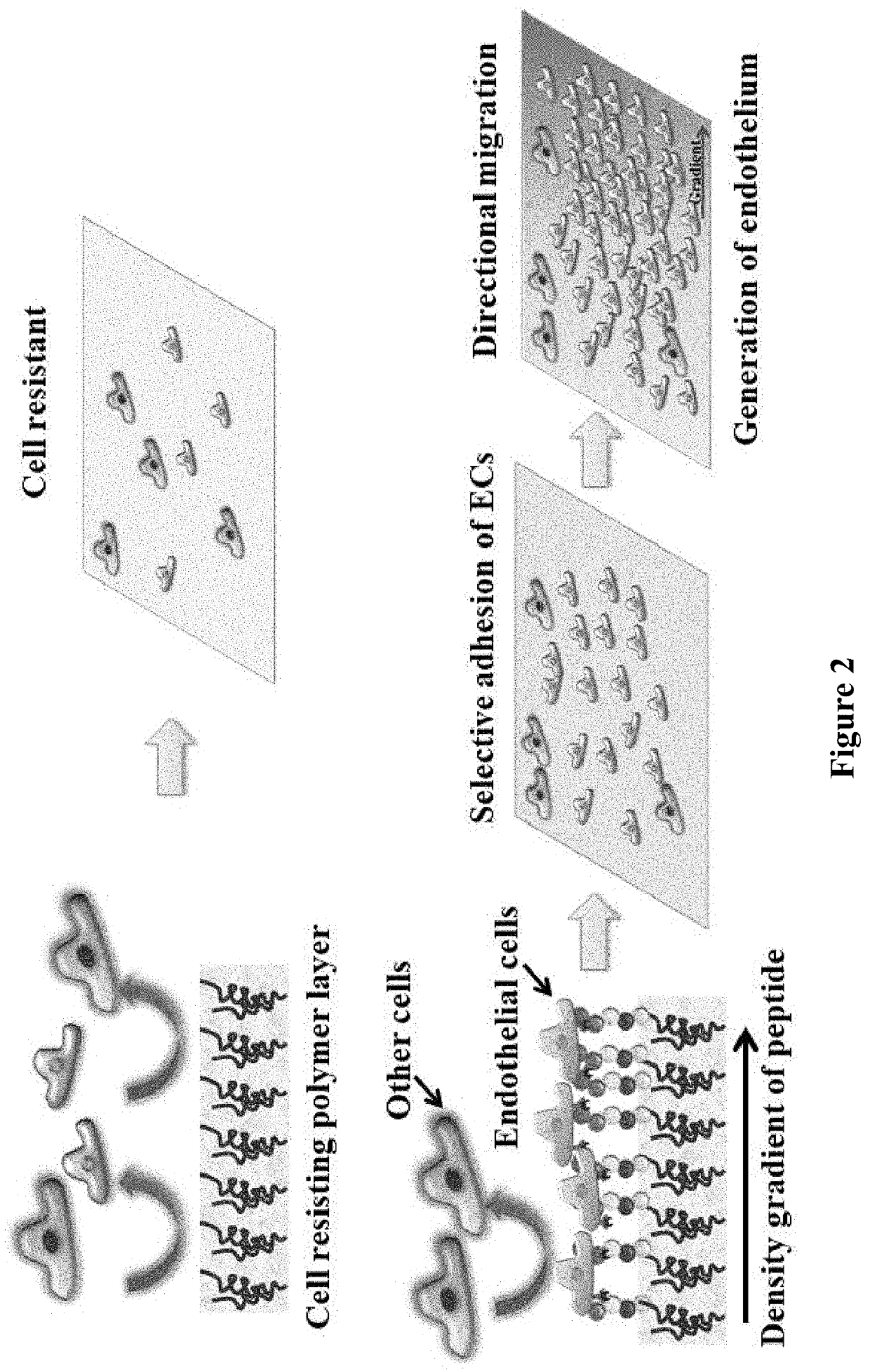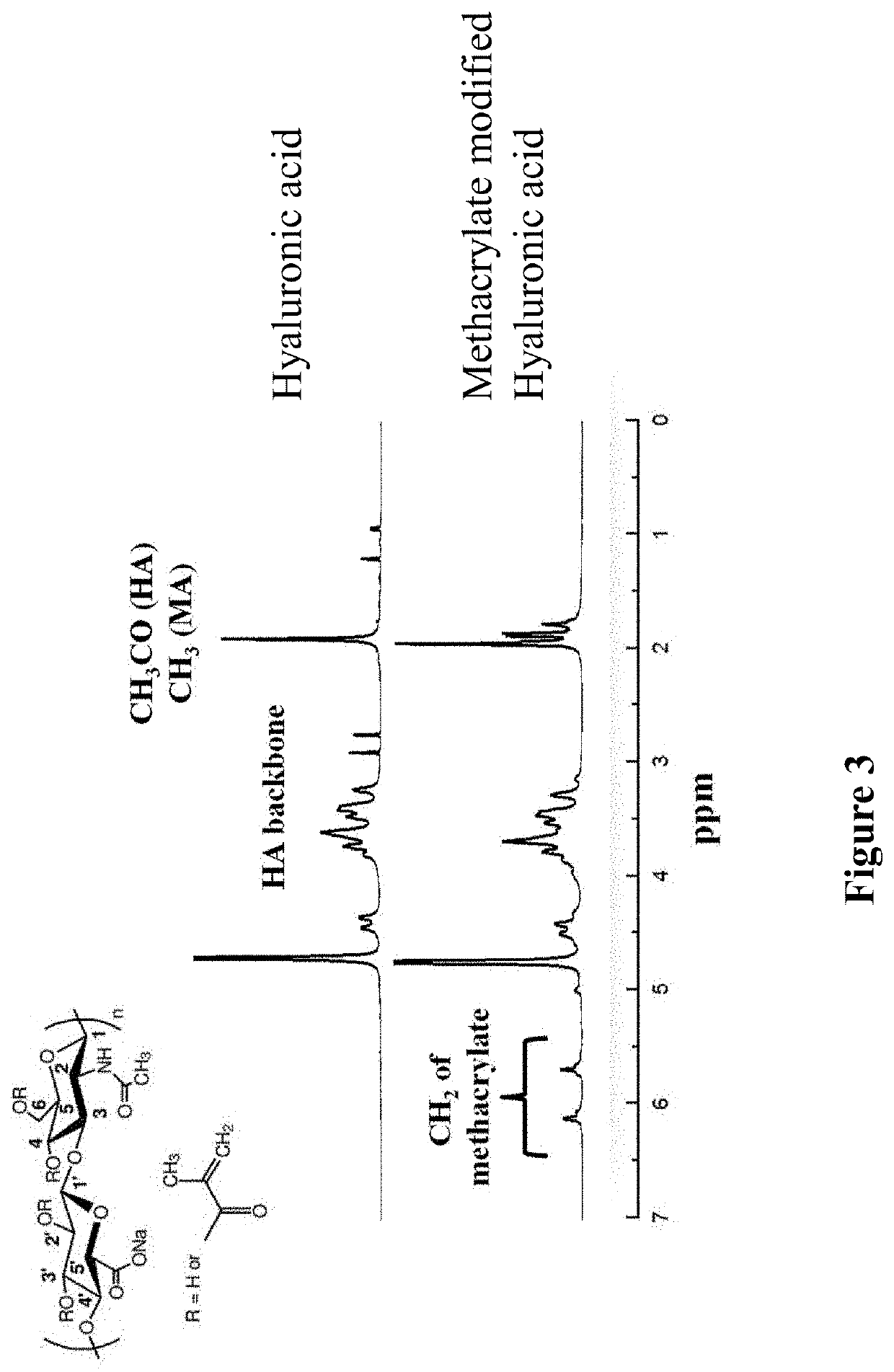Gradient Coatings of Biopeptides That Promote Endothelial Cells Selective Adhesion and Directional Migration and Methods of Using the Same
a technology of endothelial cells and biopeptides, applied in the field of biopolymers, can solve the problems of slow and inefficient process, incomplete damage of vasculature, and the majority of materials are not cell-selective, and achieve the effect of improving cell resistance, enhancing mobility of ecs, and efficient regeneration of intact endothelium
- Summary
- Abstract
- Description
- Claims
- Application Information
AI Technical Summary
Benefits of technology
Problems solved by technology
Method used
Image
Examples
example i
Synthesis of Methacrylatedhyaluronic Acid (MA-HA)
[0077]MA-HA was prepared according to a previously reported method. [Bae, M.; Yang. D.; Lee, J.; Heo, D.; Kwon, Y.; Youn, I. Photo-cured Hyaluronic Acid-Based Hydrogels Containing Simvastatin as a Bone Tissue Regeneration Scaffold. Biomaterials 2011, 32, 8161-8171.] In brief, HA (1.0 g) was dissolved in 100 mL mixed solvent of DMF / water (½, v / v), into which a 20-fold excess of methacrylic anhydride (7.4 mL) was added. The mixture was stirred for 24 h in an ice bath after the solution pH was adjusted to 8.0 using a 5 M NaOH solution. The pH was maintained between 8˜9 during the whole procedure. MA-HA was obtained by precipitation in excess ethanol and collected by centrifugation, which was further purified by dialysis for 3 d against distilled water, and finally freeze-dried. The grafting ratio of methacrylate was 2.1 in each HA repeating unit with four —OH reaction sites according to 1H NMR (FIG. 3).
Preparation of Polydopamine (PDA) ...
comparing example i
[0088]Grafting of MA-HA was carried out according to Example 1. No CREDV peptide was further immobilized.
[0089]Cell adhesion and migration assays were carried out according to Example 1.
[0090]As shown in FIG. 13, the cell adhesion number of ECs and smooth muscle cells was similar on MA-HA surface, which was much lower than ECs on CREDV concentration gradient. The results suggested the universe cell-resisting effect to both ECs and SMCs of HA layer.
[0091]As shown in FIG. 14, both around 50% of ECs and smooth muscle cells migrated towards +X direction. ECs showed no directional migration on MA-HA surface. The result indicated that the cell-resisting layer do not have ability to induce directional migration of both ECs and SMCs.
[0092]As shown in FIG. 15, migration rate of ECs (7 μm / h) was much lower compared to CREDV concentration gradient (14 μm / h). The result also indicated that SMCs move much faster than ECs on cell-resisting layer, which is similar to the pattern in natural environ...
comparing example ii
[0094]To generate an CREDV concentration gradient (total length was 10 mm) without cell-resisting layer, the CREDV solution was slowly injected into a centrifuge tube by a micro-infusion pump at 37° C., where PDA-coated PCL membranes were placed vertically. The injection rale was adjustable with the longest reaction time of 60 min. As a result, a CREDV concentration gradient without MA-HA, the cell-resisting layer, was fabricated.
[0095]Cell adhesion and migration assays were carried out according to Example 1.
[0096]As shown in FIG. 17, on CREDV peptide concentration gradient without MA-HA, the number of smooth muscle cells was much higher than that on CREDV concentration gradient. The result indicated that the peptide concentration gradient can support both ECs and SMCs adhesion without the HA cell-resisting layer.
[0097]As shown in FIG. 18, on CREDV peptide concentration gradient without MA-HA, 70% of ECs migrated towards +X direction, which was much lower than on CREDV concentratio...
PUM
| Property | Measurement | Unit |
|---|---|---|
| molecular weight | aaaaa | aaaaa |
| thickness | aaaaa | aaaaa |
| concentration | aaaaa | aaaaa |
Abstract
Description
Claims
Application Information
 Login to View More
Login to View More - R&D
- Intellectual Property
- Life Sciences
- Materials
- Tech Scout
- Unparalleled Data Quality
- Higher Quality Content
- 60% Fewer Hallucinations
Browse by: Latest US Patents, China's latest patents, Technical Efficacy Thesaurus, Application Domain, Technology Topic, Popular Technical Reports.
© 2025 PatSnap. All rights reserved.Legal|Privacy policy|Modern Slavery Act Transparency Statement|Sitemap|About US| Contact US: help@patsnap.com



